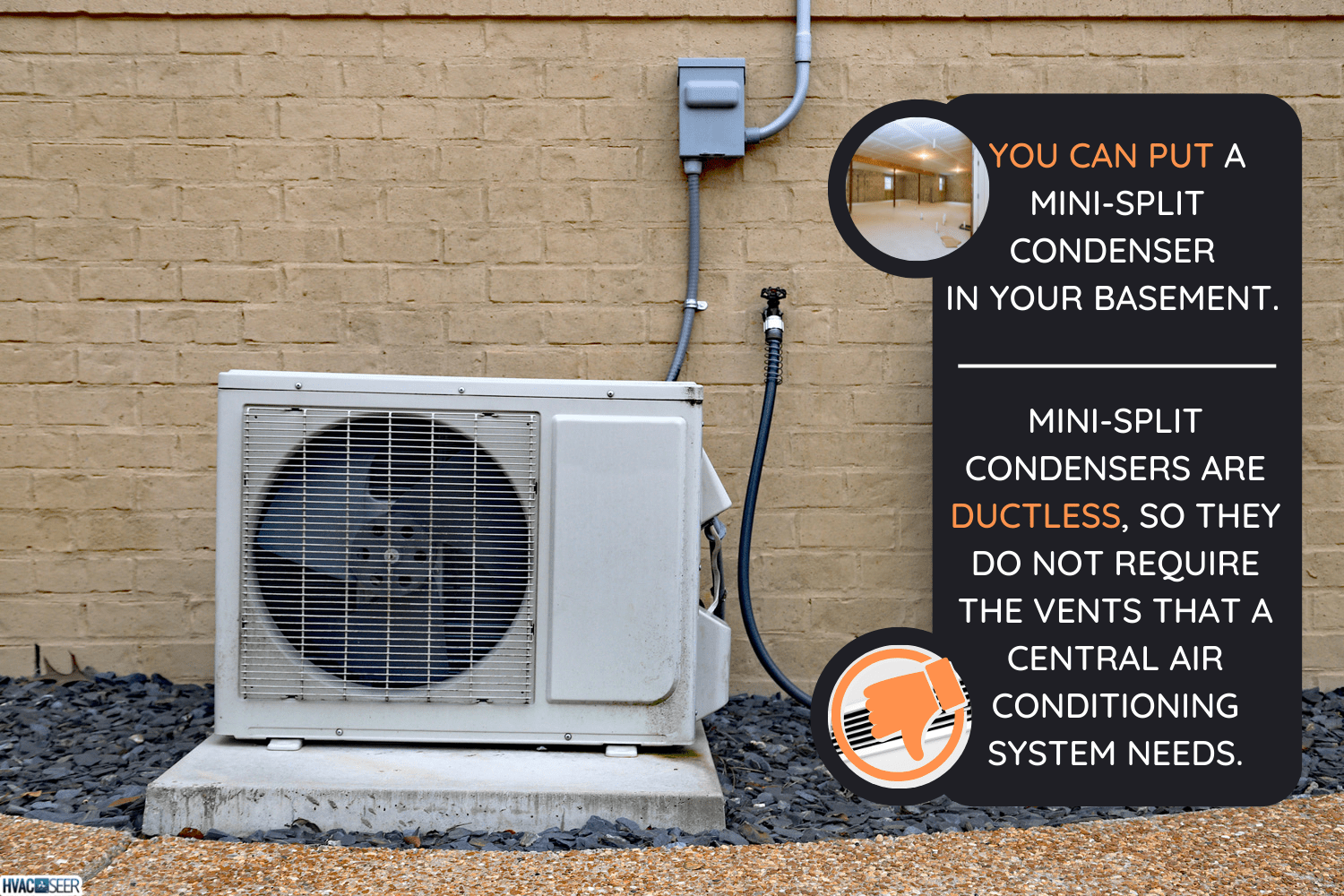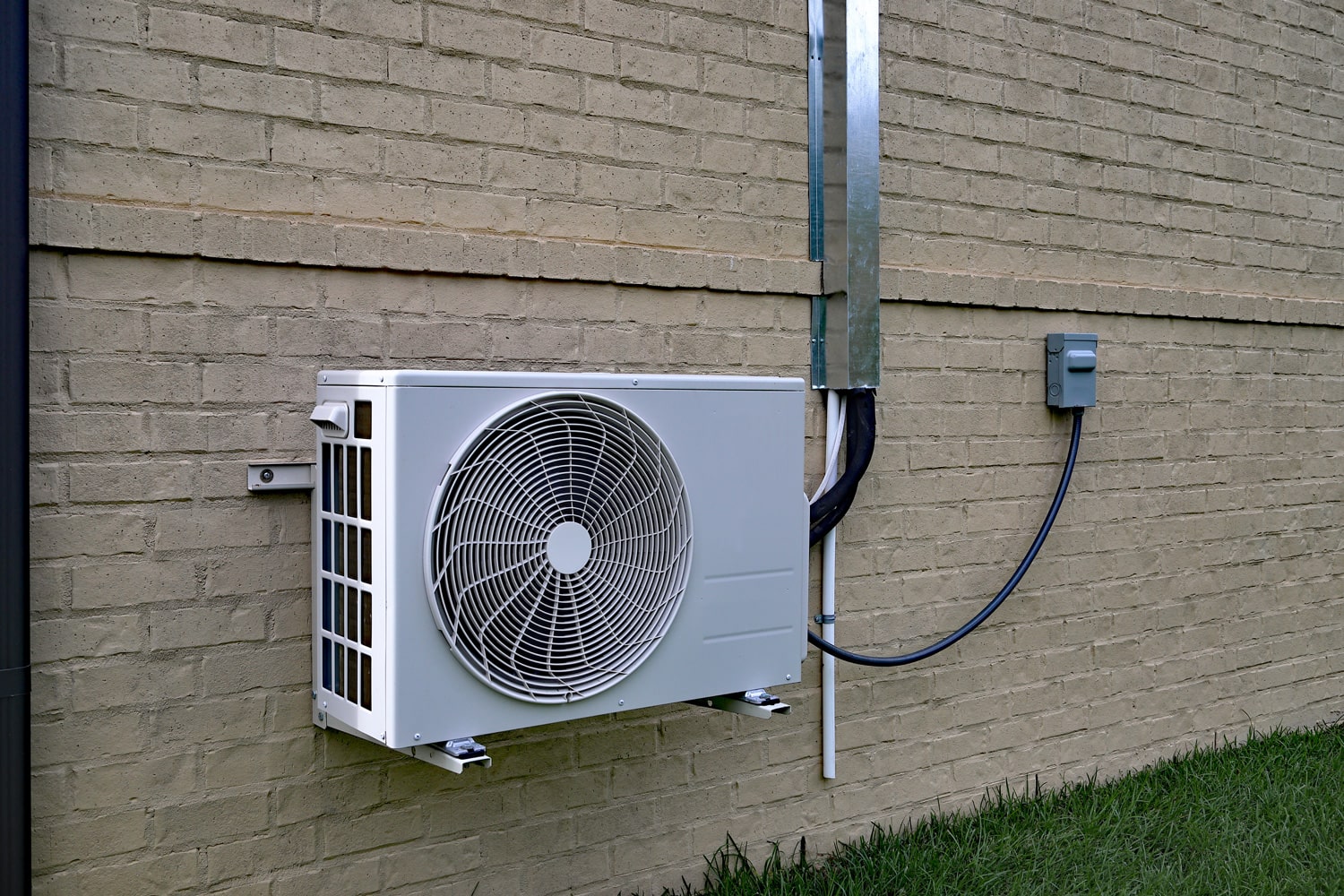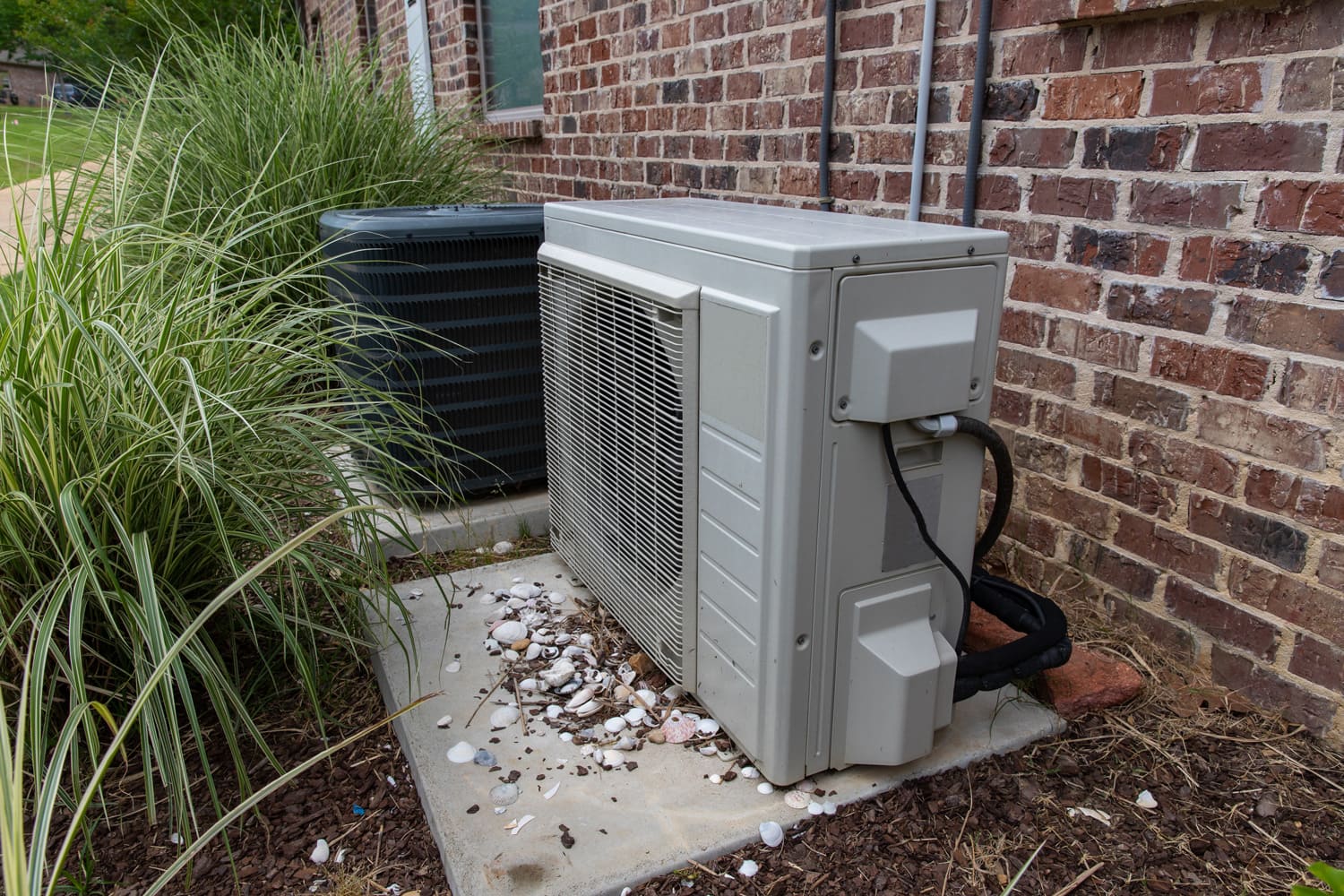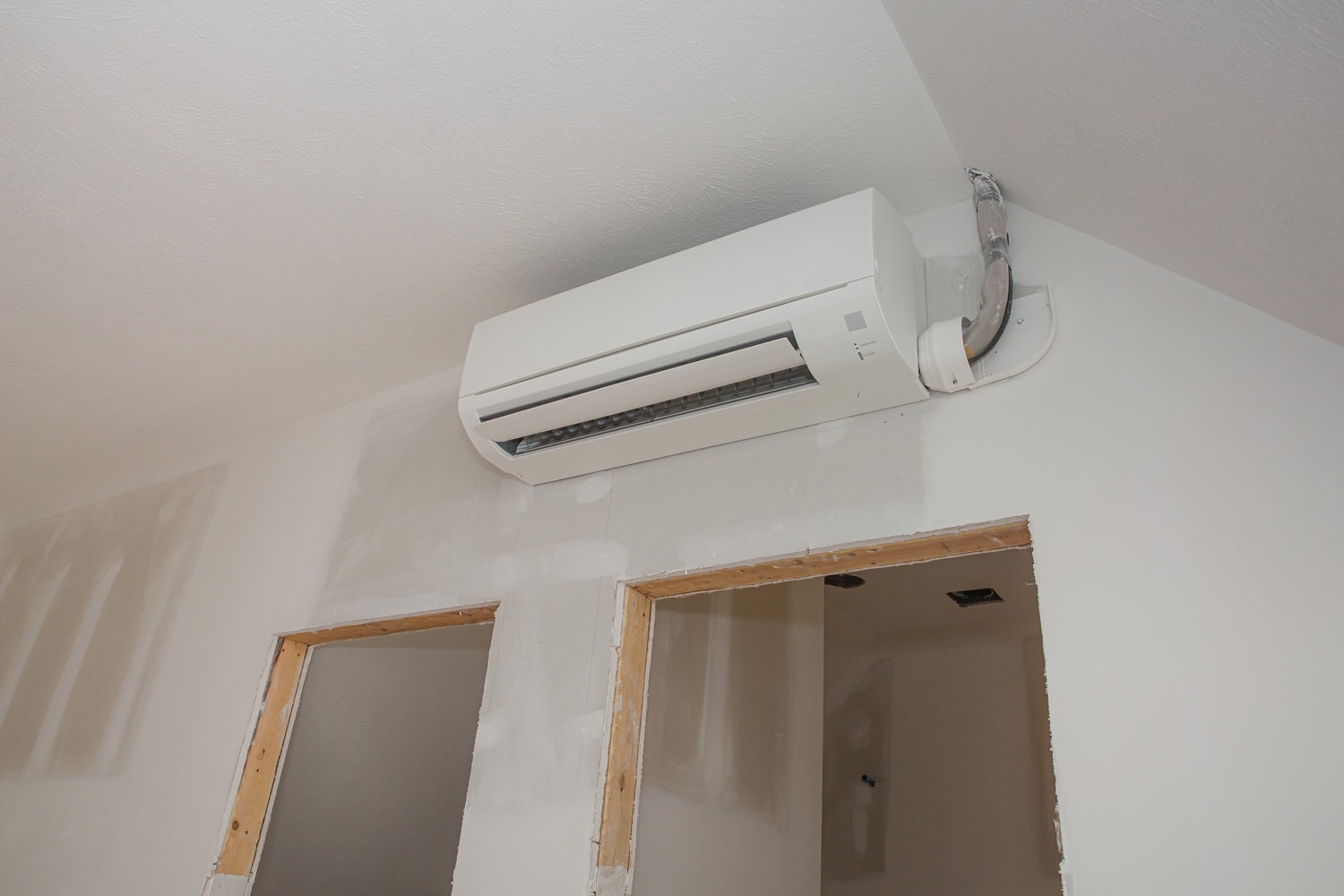Basements are not usually included in a home's central cooling system. You might be planning to install a mini-split condenser in your basement and are wondering what you should know about it. Don't worry because we have done the research to provide you will all the necessary information you will need to know when installing a mini split in your basement.
You can put a mini-split condenser in your basement. Mini-split condensers are ductless, so they do not require the vents that a central air conditioning system needs.
Installing a ductless mini-split in your home will only require indoor and outdoor units. The units will be connected through small refrigerant tubings without having to install large ducts. Mini-splits are capable of ventilating and removing humidity from your basement.
Ductless mini-split condensers can provide ventilation in your basement. These devices are designed to operate in only specific areas in your home, so a basement at the bottom of the house would be a good place to install them. Continue reading as we discuss all the other information you will need when installing a mini-split condenser in your basement.

Is A Mini-Split Condenser Good For Basements?
Basements are located below the foundation of your home so it is very common to exclude this area from the installation of a central cooling system. However, a lot of homeowners utilize basements for more than just a storage space or an extra area. Basements can also be used as an additional living space for the family, with some basements actually having a living room area that is frequently used.

Basements that do not have proper ventilation tend to have a stuffy atmosphere. Without windows or ducts, basements can also become humid and uncomfortable to use. That is why installing proper ventilation will increase the coziness of the area. To achieve that, you can choose to either add another vent in the central AC or install a mini-split condenser for this.
How Do You Deal With Older Basements?
However, it can be complicated and expensive to include a basement in a preexisting central conditioning system. For old houses with basements that especially need ventilation, you would have to add vents, or redirect one. This process could include tearing down walls or ceilings, which will be laborious and expensive.
There could also be a reason why the basement was not included in the central conditioning system of your home. It is possible that the basement is beyond the capacity of your central air conditioning system. Adding another area, especially a spacious basement, could take a toll on your central AC unit.
Ductless mini-splits are a good solution to an unventilated basement. Instead of having to pay for labor and materials to redesign the vents of your central AC, you can install a mini-split in the room instead.
Can Mini-Splits Ventilate The Basement Better Than Central AC Vent?
Mini-splits do not need vents because the outdoor and indoor units are only connected by refrigerant and electrical lines. These cables are not thicker than 5/8 inches plus the 2 inches of insulation. This makes ductless mini-splits significantly easier to install and more flexible with their air distribution.

Mini-splits might be more convenient to install in a basement compared to adding ducts to your central AC system, but they can not ventilate rooms better than the central AC unit. What can best ventilate your own basement depends on the size of the area, as well as your specific ventilation preference.
Mini-split conditioners are a good option for adding ventilation to your basement, but it is not necessarily the best air conditioning system.
This means that if you have a larger basement and would want to keep providing cooling or heating in multiple rooms, it might be best to choose the central AC system. It could be better to add slim return ducts in the basement rather than installing multiple indoor mini-split units in each room.
What Are The Pros And Cons Of A Ductless Mini-Split System?
Ductless mini-split systems are not completely better than central air systems. However, these air conditioning devices do have the flexibility of heating and cooling specific places inside a home. Compared to central air conditioning systems, ductless mini-splits are easier to install.
Since mini-splits can be installed without the ducts, these air conditioning devices are generally better to install in specific spaces, like a basement. But it is important to know that ductless mini-splits are not limited to cooling and heating in one room only.

One outdoor unit of a mini-split can be connected to up to 8 indoor units that can be installed anywhere in the home. This makes ductless mini-splits just as capable as any central air conditioning system, especially in smaller homes.
However, as mentioned, mini-splits are not completely better than central air systems. Below is a comprehensive list of the ductless mini-splits pros and cons to help you decide if this type of air conditioning system best suits your needs.
Ductless Mini-Split Condenser Pros
Here are the advantages of mini-split condensers.
Energy Efficient
Central air conditioning systems operate on the entire home, unlike a ductless mini-split. Ductless mini-splits can be installed in a specific place in your home, and they will only operate there, without also wasting power on other rooms that do not require air conditioning.
In addition, these devices are designed to sense if the room is in use, or if the temperature is above or below desirable. This means that it will not turn on and use electricity when the room does not need it.
The ability of ductless mini-splits to sense if they should turn or off will save you money. This makes ductless mini-splits more efficient in using electrical energy in the long run.
No Ductwork Needed
Ducts are the channels in your home that central air conditioning systems require in order to disperse warm or cool air in your home. These ducts have various sizes, but they can come as thick as 41 inches in diameter, with the thinnest ductwork being 3 by 7 inches.
Just as we mentioned before, mini-splits do not require ductwork. This type of air conditioning system will only be connected by the electrical and refrigerant lines, which are significantly lesser in size compared to central air ducts.
Without requiring ducts, mini-splits are easier to install in your home and they can be used in basements or attics. Ducts require frequent maintenance and cleaning, and choosing a mini-split for your home will save you from these expenses.
Ductless Mini-Split Condenser Cons
Here are the possible issues you may face with mini-split condensers.
Refrigerant Lines Affect Your Home's Aesthetics
Central air conditioning ducts are hidden in your home's ceilings, but the ductless mini-split refrigerant lines will run through the outside walls of your home. This could affect the aesthetic of your home, especially if your home's exterior walls have a significantly different color.

Refrigerant and electrical lines are often covered in insulation, which is dark and can easily stand out against a light-colored wall. To modify this result, you can choose to purchase cable covers that closely resemble the shade of your home's exterior walls. The cable covers also act as additional protection against outdoor elements such as dust and water.
Click here to shop for decorative mini-split line covers on Amazon.
Does Not Have The Same Filtering Capabilities As A Central Air System
Ductless mini-splits take the air that is inside the room where the indoor head unit is installed. The air is then conditioned into warm or cool air before being dispersed back into the same room. However, this type of air conditioning system can not filter the air the same way a central air system can.
In addition to mini-splits being not as efficient in air filtering, their smaller air filters also need frequent upkeeping. These include cleaning, repairing, or replacing the air filter.
Are Ductless Mini-Splits Cheaper Than Central Air Systems?
Not all ductless mini-splits are cheaper than central air systems. In fact, for the initial investment, central air conditioning systems are less costly than having to install ductless mini-splits in your home.
However, the cost for whichever central air conditioning system will ultimately depend on your preference. In addition, when you speak to a contractor, your budget for the installation will always be considered. This will help them figure out the most suitable air system for you.
Wrapping Up
Mini-split condensers can be installed in basements because they are ductless and can operate in a specific room. This air conditioning device will have you from spending a lot of money on adding or redirecting a preexisting air duct from your central air system.
In this article, we discussed the possibility of installing a mini-split in your basement. We also discussed the pros and cons of installing a ductless mini-split in your home as well as the cost compared to a central air system. Make sure to choose the best air conditioning system for your home depending on your specific ventilation needs.
Made it to the end? Check out some of our other related posts!

